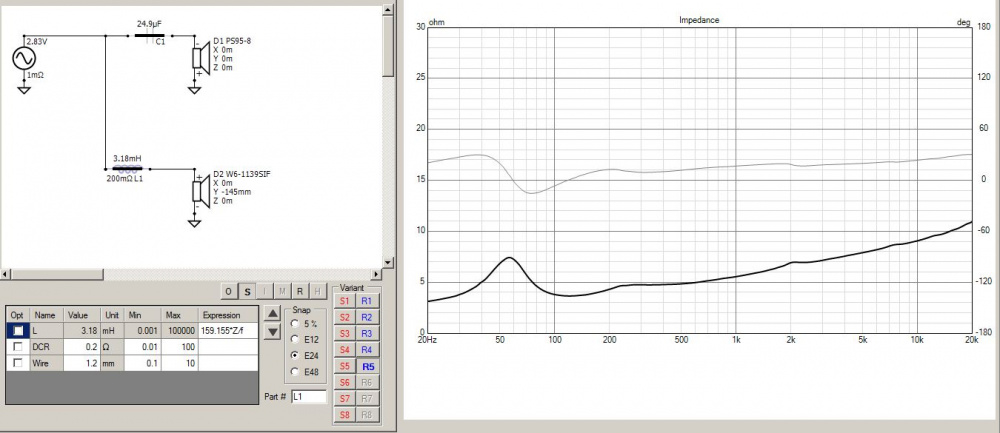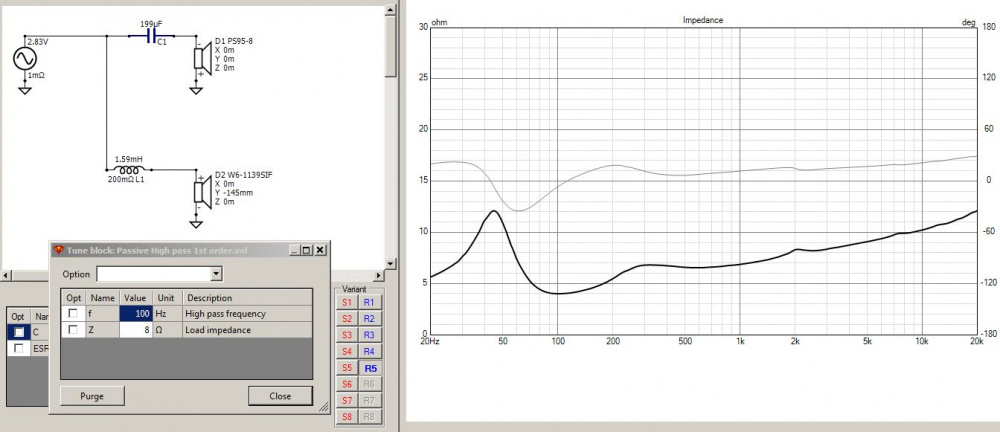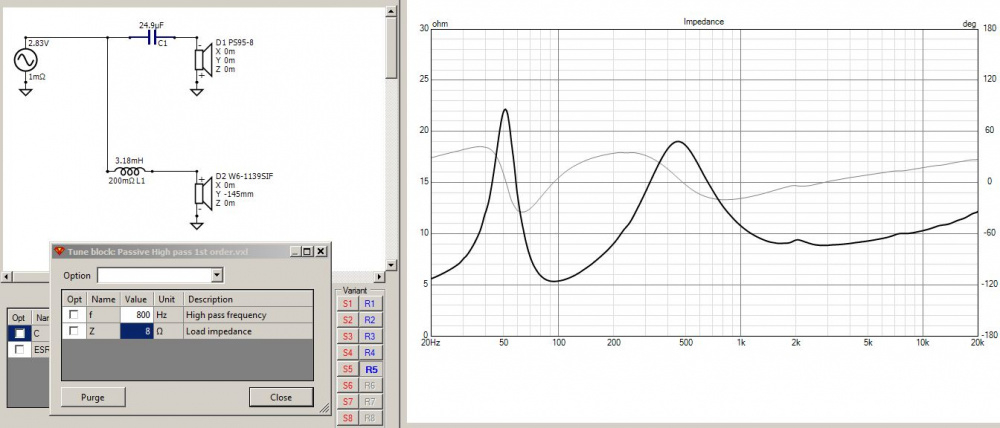Site Links
Howdy, Stranger!
It looks like you're new here. If you want to get involved, click one of these buttons!
Quick Links
Categories
In this Discussion
Who's Online (0)
Trying to keep out of trouble; impedance question.
I’ve been playing with VituixCad setting a LP 1st order on a 4ohm woofer with a HP 1st order on an 8ohm full-ranger with varying -3dB target levels on each driver, to look at the affect on the system’s impedance load to an amp. I.e. a) with a large overlap where the LP (woofer) is set at 400Hz with the HP (full ranger) set at 100Hz, and b) with a disconnect / hole with a LP at 200Hz and a HP at 800Hz. The ‘goal’ of this exercise is just to look at extremes to see if either largely overlapping or underlapping a 4ohm woofer with an 8ohm full ranger gets the system’s impedance below 4ohms, i.e. as would be the case by paralleling (without a crossover) these two drivers. I didn’t see any issues, but wanted to check with this group as I’ve been known to mess up modeling in the past. Additionally, do differing orders have unique issues I should be aware of?
Thanks

Comments
Maybe post some graphs?
Your results will vary based on what 4 ohm woofer and 8 ohm full range driver you happen to select to make comparisons. Since I had in box impedance data files loaded in VituixCAD for an 8 ohm full ranger (Dayton PS95-8) and a 4 ohm woofer (Tang Band W6-1139SIF), I used these drivers to illustrate the differences. Hopefully this project will keep us both out of trouble!
Paralleled drivers without xover:



400Hz 4 ohm LP on woofer and 100Hz 8 ohm HP on full ranger:
200Hz 4 ohm LP on woofer and 800Hz 8 ohm HP on full ranger:
Ran three examples; does show extreme overlap bringing down system impedance towards 3.6ohms. Third example probably more realistic with slight overlap netting 3.8ohms, not a real issue. Tends to make some sense with overlap drivers in parallel. But not certain here if my 'results' are accurate / sound?
I was running examples while you had posted- thanks
I get down to about 3.6 ohms with paralleled drivers in my example as well. This goes up to about 4 ohms with a slight overlap and up to about 5.2 ohms with a disconnect/hole type situation. So I would say your results are very accurate and sound. Either that, or we are both completely wrong.
If the sensitivity of the woofer is high enough, you could use an 18-20G air core inductor. The higher dcr might help keep things from dropping too low.